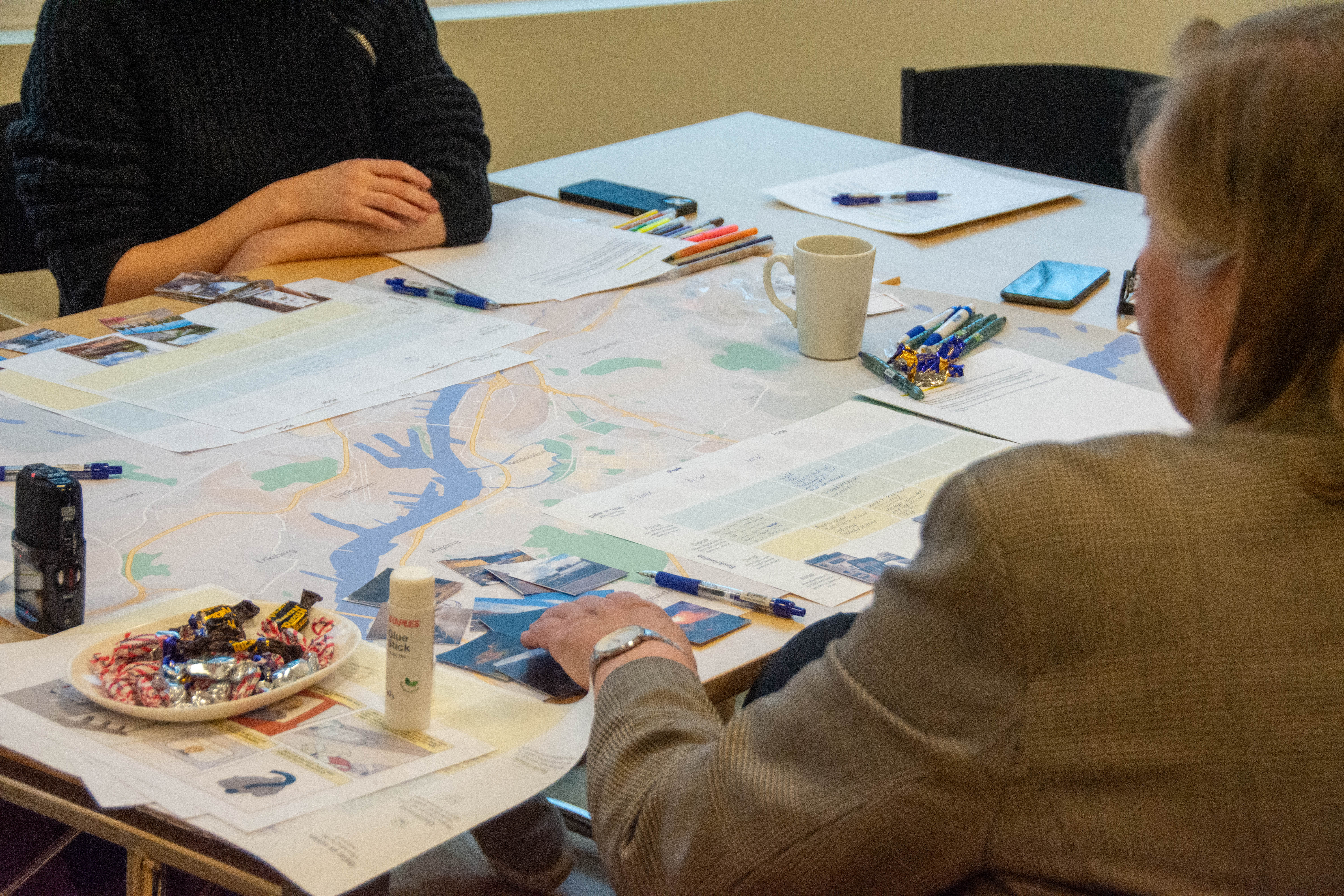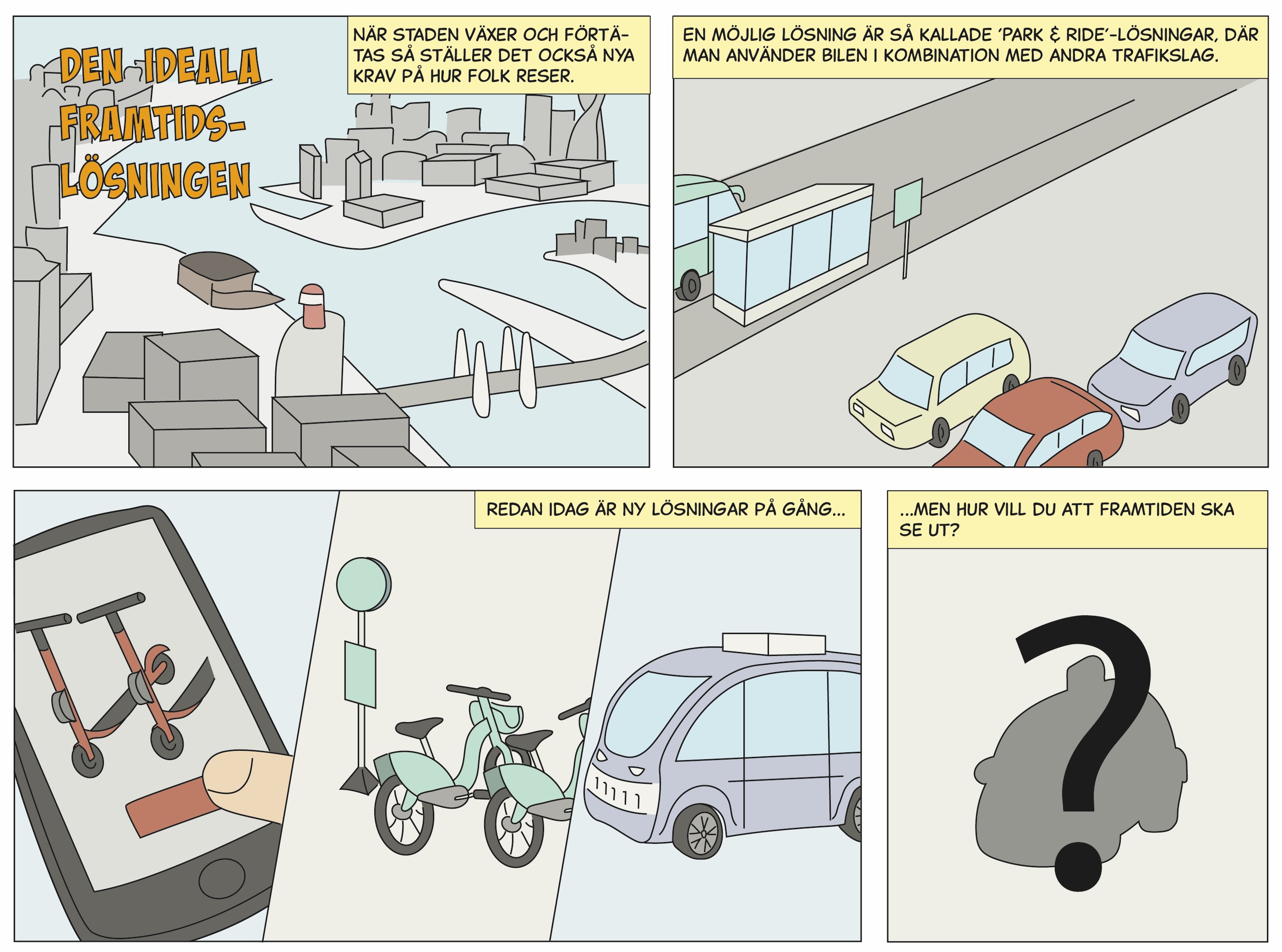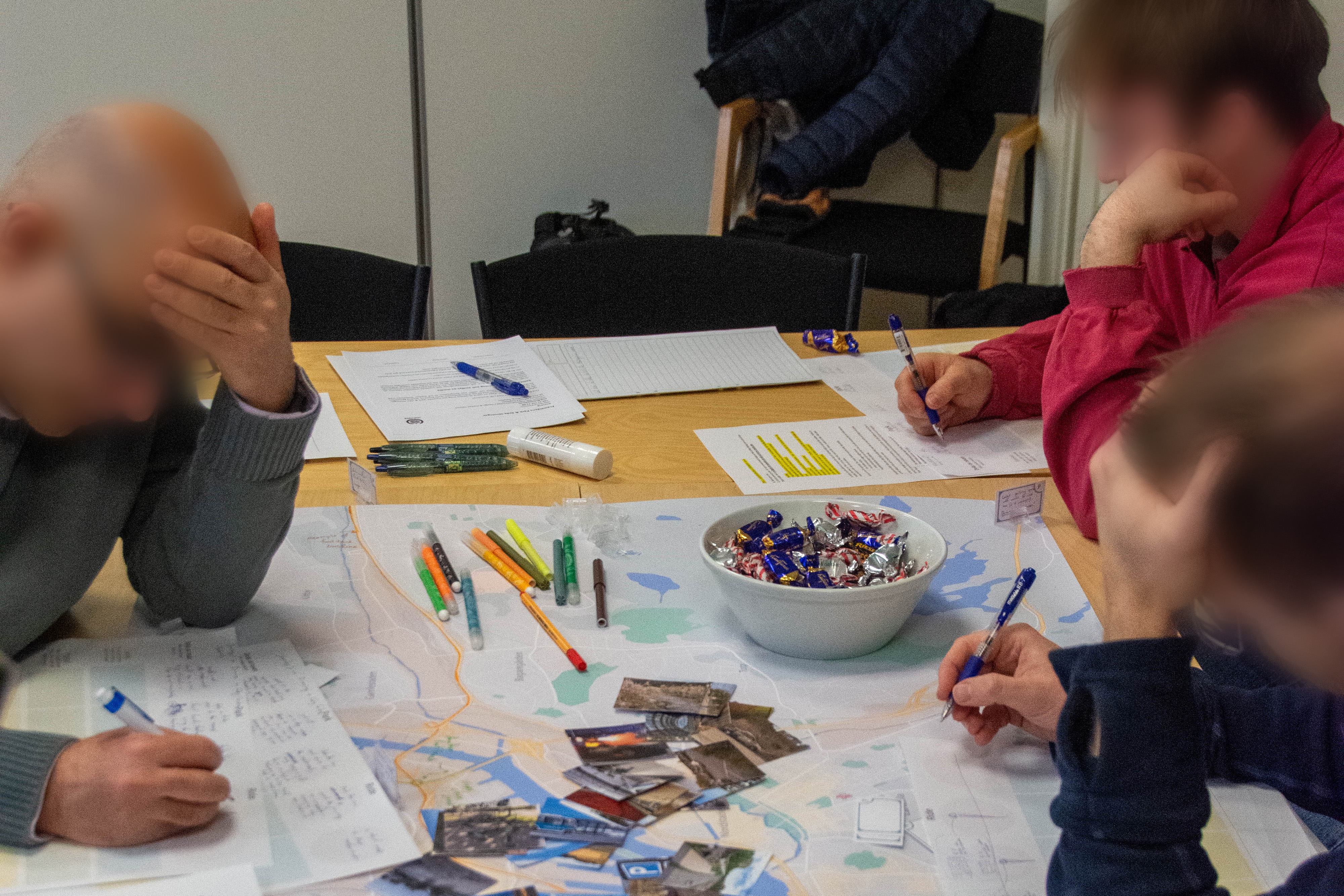
Workshop and questionnaire study that investigated how people experience park-and-ride services and how these could be designed in the future to better meet commuters' needs.
As cities grow and become denser, new demands are placed on how people travel. One solution is park-and-ride services, where people use their cars in combination with other modes of transportation. New solutions are already being developed, but what might tomorrow's solutions look like? Therefore, the aim of this study was to investigate how people experience park-and-ride services and how these could be designed in the future to better meet commuters' needs.
I planned and took part in conducting and analyzing the study.

A study was conducted consisting of a questionnaire study and two co-creation workshops with users of park-and-ride services and experts within the domain of transportation. The questionnaire consisted of questions regarding travel behaviour and open-ended questions where respondents described what is good and bad with the park-and-ride services they are currently using. Participants were active users living within and around the city of Gothenburg.

The two workshops aimed to gain a deeper understanding of how people experience using park-and-ride services today, as well as to generate ideas on how future park-and-ride solutions could improve the commuter experience. Before the workshops, information was sent out regarding the purpose of the study, along with material in the form of a comic strip, aimed at encouraging participants to start reflecting on what future commuting solutions might look like. The workshops had different, but similar, workshop setups. They both had a large map of Gothenburg as a mediating object, intended to help participants think creatively while also considering various geographical aspects in their discussions. They also both had a 'user journey' template to concretize their ideas and create design solutions that take into account the entire commuting journey.
The study identified different types of incentives for why to use or not to use a combination of car and other modes of transportation, such as public transit. These three factors are: the duration of the public transit journey, the travel time itself, but also the disincentive of waiting and the uncertainty; the convenience of using public transit for part of the journey, not having to drive oneself, and the opportunity to work and rest; and the cost of the trip, where it was important for park-and-ride facilities to be free.
In addition to identifying the important incentives for choosing to commute with a combination of car and other modes of transportation, the analysis identified seven aspects crucial for the experience of using park-and-ride facilities. The seven aspects are: (i) proximity, (ii) layout, (iii) safety, (iv) accessibility, (v) service, (vi) cost, and (vii) communication.

To improve the aspects identified, participants discussed several solutions to improve park-and-ride services, focusing on their location, type, and user experience. They suggested placing facilities at critical points before traffic congestion begins and including smaller, more central hubs with alternative transport options like bikes and e-scooters. Proposals included dynamic on-demand minibuses, 'fast-track' buses with few stops, and ensuring facilities also support outbound travel. Key aspects discussed were safety, with recommendations for well-lit, clean areas with cameras; service options like shops and additional services to add value; and ensuring parking availability through apps. Effective collaboration between public transport operators, companies, and other actors was deemed essential. As well as better understanding travellers’ motivations and possibly using negative incentives for motorists to encourage the use of park-and-ride services.